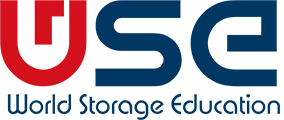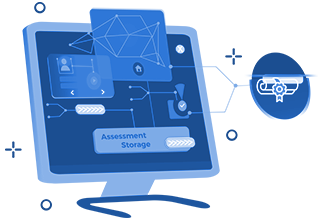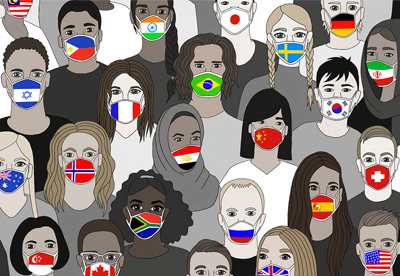For the last 100 years, a simple report called the academic transcript has operated as the official representation of student achievement. This bare-bones list of classes and grades was intended to facilitate communication between schools in an industrial age where the “traditional” student meant qualified 18–23 year olds who were enrolled full-time, residing on campus, and having their progress measured by time-exposure to subject matter via the credit hour (the Carnegie Unit).
Those days are long gone.
Analysis from 2011 summarizes less than one-quarter of all enrollment in higher education was at a four-year institution, and that percentage has been rapidly shrinking. Further, only half of those entrants into college are finishing. The rest are leaving with debt, no degree, and no other record with social value. Beyond the financial difficulty — for both students and schools — this trend is also creating new conceptions about what higher education should be. Rather than being a place for a select few to explore identity and possibly find a career, the model has flipped. Broad access is now considered a virtue and school is viewed increasingly as a pathway to a better job. And with so few attaining a degree, the idea of not finishing college has become the norm. The response to this mismatch between student expectations and academic options has been slow, not only because institutions are inherently slow to change, but also because the diverse growing numerical majority of non-traditional students has often been eclipsed by a lingering idealization of “traditional” students.
Today, school systems understand this trend and are actively responding.
First, there has been broad acknowledgment that time exposure to a subject doesn’t matter so much as actual skills achieved. In a 2015 report, the Carnegie Foundation put it this way:
“The Carnegie unit sought to standardize student exposure to subject matter by insuring they received consistent amounts of instructional time. It was never intended to function as a measure of what students learned.”
The challenge for schools is that the Carnegie Unit has always been the organizing principle behind the academic transcript. Rethinking how academic experience gets documented requires a generous sense of mission that seeks out how to recognize learning in all of its variety. The ultimate desire is to evolve educational offerings and academic records in a way that helps three different stakeholders:
- Students: how can academic records become part of the educational experience and remain an ongoing resource to the student?
- Employers: how can academic records become more useful for hiring?
- Schools: how can they record more kinds of learning experiences without diluting what an education means and without losing common understandings of achievement?
I was fortunate to be invited to this year’s meeting about the Comprehensive Student Record , hosted by the Lumina Foundation, which brought together leadership from schools from all over the U.S. to share their experiments for developing a more complete student record. Below are the dominant trends I observed, along with how securing records using the blockchain is directly aligned with strategic goals and serves all three stakeholder groups identified above.
More Options for Certified Achievement
Steven Mintz, Executive Director of the University of Texas System’s Institute for Transformational Learning, confirmed that that the University of Texas system has a 49% completion rate of students who finish with a degree, which mirrors national trends. In his beacon call about the state of education, Navigating the Perfect Storm , he argues that without smaller units of academic achievement as options, many students simply leave with debt. Universities are responding by offering various kinds of certificate programs and online courses that create flexible pathways for working and remote students. ASU’s Global Freshman Academy is a great example of these priorities put into practice.
Stanford University Registrar Tom Black shared their draft framework for organizing the 100+ certificate programs that are now being offered. It serves as a great example of how traditional universities can plan, organize, and prioritize their certificate programs.
At the base of this pyramid are open classes which simply confirm participation. These are low-stakes events that don’t require identity verification, but can be helpful to those who have attended. Moving up the pyramid means classes have greater academic rigor. The middle section shows different types of certifications for which identity is verified: Completion, Achievement, and Professional Certifications. Finally, the top level shown in gold represents official Stanford credit. This includes various undergraduate and graduate certificates, as well as the pinnacle of achievement — the university degree.
Breaking up achievements and organizing them into a hierarchy gives students the option to pursue education at the level most appropriate for them. And by giving official certificates from Stanford, students receive a document that has personal and social value.
New Content and Formats
Many initiatives are seeking to revitalize the traditional academic transcript by growing their content and format in ways that address a desire for greater clarity about how coursework maps to actual competencies. Schools are addressing this need with two primary strategies:
- Enriching digital documents: Rather than simply making what was once a paper document digital (generally a PDF), building rich documents that are linked to course descriptions, coursework, projects, etc.
- Adding a co-curricular transcript: These include lists of experiences, achievements, and competencies that have been earned outside of the classroom. Of course, this project raises many important questions about academic “equivalence” and practical concerns over the complexity of an undertaking with a transnational scope.
The pilot projects presented by nine different schools were presented with a larger aim to “capture learning wherever it occurs” and to issue evidence of those achievements in a manner that “belongs to the learner.” The Comprehensive Student Record (CSR), sometimes called the Lifelong Learning Record (LLR), is intended to fulfill both of those aims. Regardless of the challenges, the impetus for complete documentation of learning will require systems that can easily provide authoritative verification for every stakeholder. That is where the blockchain comes in.
Blockchain-Based Records
Broad agreement has emerged that whatever official records end up being produced, they should be owned by the learner. In the context of building a lifelong transcript of achievements and skills, I believe that ownership has to be literal — meaning learners must technically possess their records without any kind of ongoing dependence on institutions to certify them as authentic. Having to rely on every school, employer, club, and organization to provide official records over and over, across a lifetime, isn’t a realistic expectation. Plus, schools and other organizations may close. Learners must be able hold and share their official records directly with others in a manner that is trusted, even if the issuing institution has ceased to exist.
Is this technically possible? Yes.
The public blockchain is a world-wide network that maintains an immutable ledger of transactions. While that ledger has been used to record financial transactions for the past 10 years (Bitcoin), that same decentralized network can be used to store transactions of academic achievement. For example, MIT gave Sally this certificate. By using the blockchain as a notary, official documents can be shared peer-to-peer and independently verified as authentic. The blockchain doesn’t store or reveal student information, it simply stores a cryptographic receipt of the transaction. And that receipt can be independently cross-referenced anytime a student presents a claim of achievement to the world. If the receipt contained in the certificate matches the information on the blockchain, the claim is verified.
The blockchain is a fundamental technology poised to be woven into our social infrastructure over the coming decade.
Further, all of the traditional and non-traditional documents being issued by schools can now be encoded in a standards-based way (diplomas, certificates, badges, transcripts, and the like) using Blockcerts. This is a set of standards for interacting with the public blockchain that allows each school to issue records of achievement that learners can actually possess and use in the real world. In short, this is how schools can contribute their part to a learner-owned CSR.
The only entity capable of truly assembling a comprehensive student record is the student.
The movement to modularize education into smaller units of achievement, along with the innovation of a public blockchain to notarize those achievements, together constitute a secular shift in how learning is conceived and practiced. Giving students verifiable certificates for demonstrated competencies and completed coursework creates the gravitas needed to formally recognize achievements in a more granular way.
The main benefit of blockchain-based digital records is that they are tamper-proof and independently verifiable. That means recipients can share their certificates online or directly with a potential employer via an Applicant Tracking System, and any claims can be automatically verified by checking the blockchain. No third party or school involvement is required to transmit official documents. Employers get the immediate confidence that everything being represented is true, and that convenience and extends to schools as well. When a student applies to a new school or transfers between schools, these digital certificates eliminate the arduous process of gathering official records from original sources.
This new technology is the lynchpin that allows academic records to truly be learner-owned, and in turn, these create the perfect compliment to wider efforts already underway to make digital records more useful to students, employers, and schools.
Any school genuinely interested in enabling a CSR/LLR should be investigating how to utilize the public blockchain as a notary. Blockcerts provides the open-standard for interfacing with the blockchain and vendors like Learning Machine are building commercial solutions that utilize the standard in supported, scalable, cost-effective ways. A summative academic or co-curricular transcript may also be part of that record, but those are just one more stop on a lifelong journey of learning. Image for post
Please click the ♡ below to support individuals owning their own official records and building a lifelong record that they can control.
 English
English Français
Français 日本語
日本語 中文
中文 한국어
한국어 Русский
Русский









